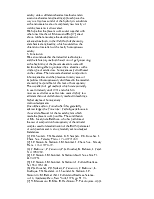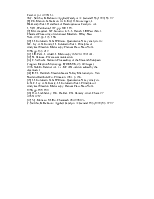











Nanoscale composition inhomogeneity in silica-aluminas
prepared by various methods
A strong heterogeneity of composition was found in all the silica-aluminas prepared by sol-gel methods that we have examined. The Si/Al ratio at 50 to 75 points in each sample was determined by EDS X-ray spectroscopy using an analytical electron microscope. The area measured at each point was smaller than 103 nm2. Relative Øuctuations of the Si/Al ratio ranged
from 10% to 20% for the most homogeneous samples, up to a factor of 100 in other cases. In some samples particles were found which contained solely silica.
We have examined on the one hand a series of laboratory samples prepared by the co-hydrolysis of alkoxides over a large range of composition and, on the other hand, industrial catalysts of very similar compositions. The latter ones were prepared by various sol±gel methods probably based on using precursors other than alkoxides. Impurities were also analysed. On the whole, the industrial samples are often more heterogeneous than the laboratory ones, although one of them was almost as homogeneous as the laboratory samples. Most of the industrial catalysts contained less impurities than those prepared in the laboratory. # 1999 Elsevier Science B.V. All rights reserved. Keywords: Silica-alumina; Sol-gel; Homogeneity of composition
1. Introduction
Silica-aluminas are of considerable practical importance in industrial catalysis. They are used as
such or serve as additional catalyst components and supports for finely dispersed catalytic particles (metals or sulphides). This explains the considerable interest
that they attract. This concerns both the preparation methods (especially the efforts to obtain homogeneous silica-alumina materials) and their surface acidity, which is the characteristic of highest relevance to their catalytic activity. As regards the preparation methods, sophisticated
chemical routes are necessary for preparing submicrometer-scale particles. Some of them are considered as very promising for achieving a good control of the silica-alumina homogeneity. Among these methods, sol-gel processing is attracting considerable attention
nowadays, the low processing temperature being of non-negligible practical importance in this respect. This method consists in the hydrolysis and polycondensation of mixed salts or alkoxides of aluminium and silicon. That method of preparation was used in our laboratory in the early days of the sol-gel method. A whole series of silica-alumina catalysts, covering the complete composition range, from pure silica to pure alumina [1] had been synthesised and the acidic
properties of the Ænal products as a function of composition had been investigated [2]. The catalytic activity of the whole series had been thoroughly studied. The surface acidity of the above mentioned series of sol-gel silica-aluminas had been investigated by various methods, including XPS [3]. The relationship existing between their isomerising activity and their acidity spectrum had been demonstrated and interpreted [4,5]. This is summarised in a review paper
presenting the correlation between their surface and catalytic properties [6]. ModiÆcations or variants of the process have been mentioned in the literature in the course of years. Of particular interest is the fact that the addition of organic compounds during the sol-gel preparation processing can induce a marked increase of the surface acidity of the silica-alumina catalysts, thereby increasing their catalytic activity [7].
Most research efforts concerning the sol-gel silica-aluminas have been and are presently directed towards a perfect control of the surface active sites, by associating in a fixed proportion and in a well-determined coordination of the two elements. The aim is always to
get a perfectly homogeneous distribution of Si and Al at the silica-alumina surface. However, the experimental results of various authors concerning the catalytic activity of sol-gel silica-aluminas having similar global chemical compositions exhibit a wide spread of data. Only the general trends are similar.
In order to explain these large discrepancies, it is logical to suspect that this is due to large fluctuations of the Si/Al weight concentration ratio from place to place in the catalyst and, consequently, to large variations of the local surface acidity properties. At the
global level, the overall catalytic effect induced by the existence of local sites of very different properties could change very substantially when different preparation methods are used, even if the samples have the same global chemical composition.This hypothesis was supported by the results of a rough EDS X-ray spectrometry measurement made some years ago in our laboratory. The chemical composition determined by using the electron beam of an electron microscope adjusted for normal TEM observation and roughly focalised on relatively large areas of tens or hundreds of micrometer of the sol-gel silica-alumina particles had shown a very large variation of the Si/Al mass concentration ratio from particle to particle [8]. The existence even of pure silica was shown. This suggested that large composition inhomogeneities could also occur at the scale of small particles as well. This also showed that the sol-gel method did not yet overcome the difficulty of adjusting to each other the reaction rates of the initial alkoxides to get a homogeneous final material rather than domains of different composition or even containing the two elements separated.
Уважаемый посетитель!
Чтобы распечатать файл, скачайте его (в формате Word).
Ссылка на скачивание - внизу страницы.